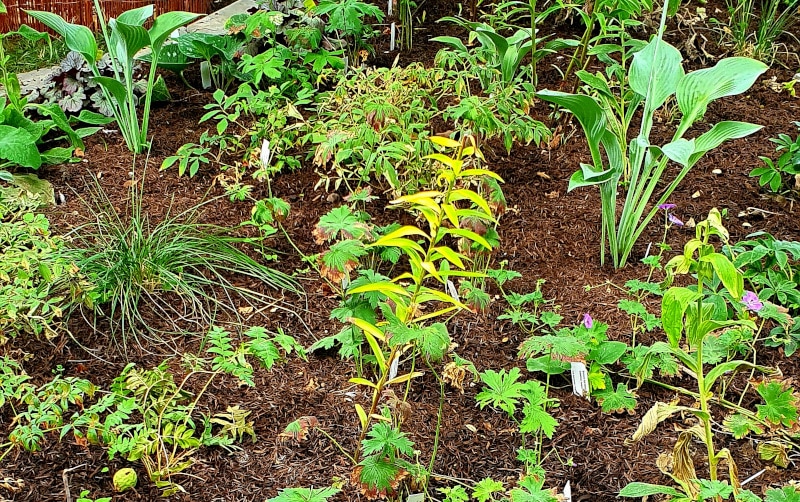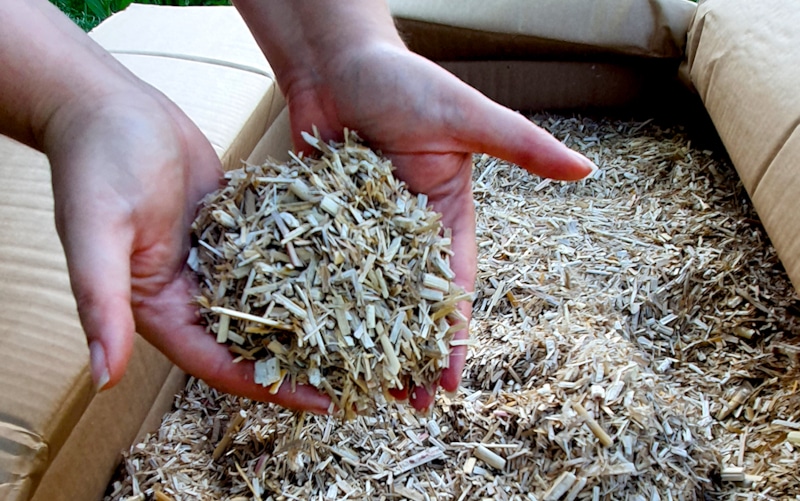How to use mulch in your garden
Mulching is a technique that involves covering the ground with organic material, which is both neat and smart. When done correctly, it reduces the need for weeding, retains moisture in the soil, and activates soil-dwelling organisms. There are many different mulching materials, and here are tips on various factors to consider depending on the plants in your flower beds and vegetable garden.

6 reasons to mulch
Mulching, or covering the ground, serves many important functions. Proper mulching is not so simple because there are various materials you can use to help your plants and make gardening easier. In essence, mulching contributes to:
1. Weed-Free Bliss: Time-Saving Prevention
Preventing weeds from growing, saving you time on weeding.
2. Sunlight Block: Inhibiting Weed Germination
Inhibiting the germination of weed seeds due to a lack of sunlight.
3. Hydration: Slowing Soil Drying
Slowing down soil drying, reducing the need for watering.
4. Erosion Defense: Minimizing Soil Runoff
Minimizing soil runoff, which can occur during heavy rain, thereby reducing erosion.
5. Organic Support: Nurturing Soil-Dwellers
Depending on the mulch material, it can support soil-dwelling organisms by aiding in material breakdown.
6. Boost Growth for Plants
Some plants, such as many fruit trees, benefit from a mulch layer for optimal growth, with many liking straw.

RIGHT MULCHING STEP BY STEP
Before choosing a mulch material, examine your flower beds carefully. What perennials or plants do you have there? What type of soil do the plants prefer? For instance, pine bark makes the soil acidic, something hydrangeas appreciate. Do you already have materials in your garden that you can use, like grass clippings?
Once you’ve selected your mulch material, clear away as much weed as possible from your flower beds, making it harder for them to break through the mulch layer. After weeding, apply the material in a 3-5 cm thick layer. If the layer is too thin, weeds will find their way through; if it’s too thick, it can lead to rot. Spread the material to cover all open spaces so that your entire flower bed is covered. Leave a few centimeters around perennials or plants to allow for growth.

DIFFERENT MULCH MATERIALS FOR YOUR FLOWER BEDS
As mentioned, there are many different materials you can use for mulching. Here are the pros and cons of each material based on your plants’ needs:
GRASS CLIPPINGS
Grass clippings are an excellent mulching material, partly because it’s often freely available in many gardens and also because it contains valuable nutrients that break down in the soil at a steady pace. When using grass clippings, be careful to ensure no weed seeds have made their way into the clippings.
Remember to adjust your choice based on the specific needs of your plants and garden conditions.

GARDENIZE GARDEN APP
Your garden friend with green fingers and photographic memory.
Gardenize is an app for gardening and cultivation that helps you to overview, understand and develop your garden and your crops. Organizing your garden makes it easier to succeed and your Gardenize app structures all information and make it searchable.
Get tips and inspiration from other Gardenizers around the world. All Gardenize basic features are free to use. You can download the app from the App Store or Google Play, or create an account directly in the web app in your browser.

More garden related content here:
Images published on the Gardenize website belong to Gardenize AB and may not be used without permission.


